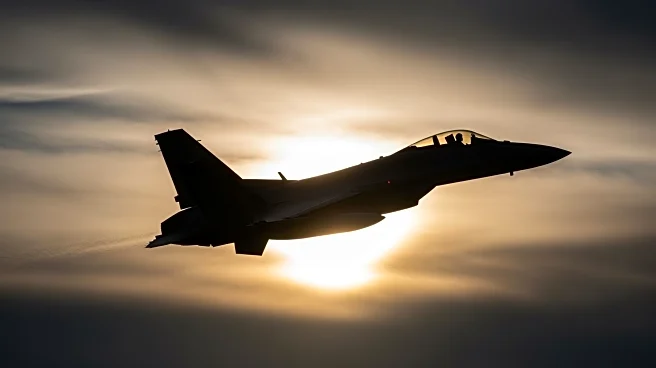What's Happening?
Ukraine is moving closer to acquiring Swedish Gripen fighter jets, as Ukrainian and Swedish officials announced the signing of a letter of intent for the export of up to 150 aircraft jets to Kyiv. This development is part of Ukraine's year-long quest
to obtain the fourth-generation aircraft type, which is designed to operate from austere airstrips. Swedish Defense Minister Pål Jonson stated that Ukraine had requested between 100 and 150 aircraft, specifically in the latest E variant, and that the Stockholm government is assessing different long-term mechanisms to finance such a large order.
Why It's Important?
The acquisition of Swedish Gripen-E fighter jets could provide Ukraine with a significant advantage against electronic-warfare and missile threats, enhancing its defense capabilities amid ongoing conflict. The Gripen-E variant is equipped with high-end electronic warfare capabilities, making it particularly useful for dispersed aerial operations. This move could strengthen Ukraine's military position and provide it with the ability to perform air-to-air or air-to-ground combat missions over longer distances and with heavier loads.
What's Next?
Prime Minister Ulf Kristersson stated that the first Gripen deliveries could begin within approximately three years, with the building and delivery of 150 units potentially taking ten years or more. The Swedish Air Force F7 Wing has already become the first operational unit to receive and operate the Gripen E. As production begins, both countries will need to navigate financing and logistical challenges to ensure timely delivery and integration into Ukraine's defense strategy.
Beyond the Headlines
The introduction of advanced fighter jets into Ukraine's military arsenal raises strategic and geopolitical implications. It could alter the balance of power in the region, prompting reactions from neighboring countries and influencing international defense policies. The long-term impact on regional security dynamics and the potential for increased military engagements will be closely monitored by global stakeholders.














